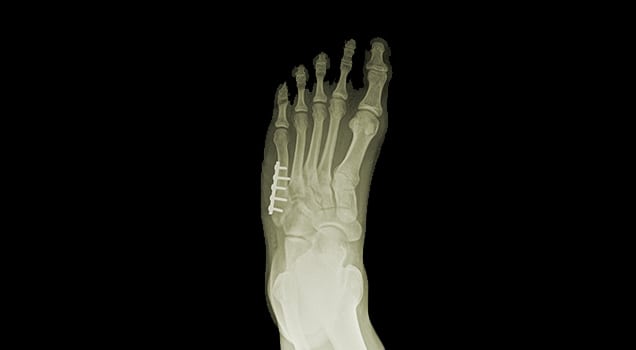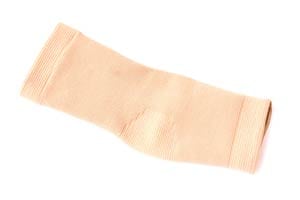
Are you one of the millions suffering from an orthopedic condition?
More than 30 million people develop a musculoskeletal issue every year in the United States, and specialists in our Orange County orthopedics office have seen every condition under the sun. There are times when back, neck, shoulder, or knee pain is potentially serious. This is usually when patients are referred to an Orange County orthopedics specialist.
- An orthopedist is trained to provide a wide range of assistance geared towards offering welcome relief
- Statistically, many minor sprains and strains are temporary inconveniences requiring nothing more than a little rest, an ice pack or heating pad, and some over-the-counter meds
CONTACT US TODAY
Identifying Likely Sources of Pain
No treatment is going to be effective if the actual source of a patient’s musculoskeletal pain isn’t determined. An orthopedic specialist often works to achieve this goal by reviewing a patient’s medical history and viewing results from diagnostic tests, usually including X-rays, CT scans, and MRIs.
Even when the source of pain is something like a herniated disc, there may be contributing issues that weren’t detected during initial diagnostic attempts. For instance, weak supporting muscles or another source of nerve compression, such as the sacroiliac (SI) joint, in the pelvis, can also cause some degree of discomfort.
Recommending Customized Treatment Options
Just because previous attempts at physical therapy were unsuccessful for a patient doesn’t mean PT of any kind won’t be effective. Oftentimes, patients have more productive results from therapy sessions once an accurate diagnosis has been made. Orthopedic specialists are often able to draw on their knowledge of both traditional and newer treatment options to present suggestions better tailored to a patient’s capabilities and needs.
A customized approach to treatment may include recommending water-based exercises for patients who have severe arthritis pain or the use of a minimally invasive procedure as an alternative to open surgery, although any type of surgery is usually a last resort if there is no pressing medical urgency. Treatment combinations (medications, physical therapy) can also be adjusted based on the results that a patient reports.
Reducing the Risk of Complications
 Patients are often referred to an orthopedic specialist for joint, bone, and soft tissue injuries to reduce the risk of unexpected complications. Orthopedists often have easier access to diagnostic tools along with experience with an assortment of musculoskeletal injuries, including those that are either sudden and severe or more progressive in nature, as is often the case with age-related wear and tear.
Patients are often referred to an orthopedic specialist for joint, bone, and soft tissue injuries to reduce the risk of unexpected complications. Orthopedists often have easier access to diagnostic tools along with experience with an assortment of musculoskeletal injuries, including those that are either sudden and severe or more progressive in nature, as is often the case with age-related wear and tear.
Receiving the right treatment sooner rather than later also reduces the risk of experiencing lingering pain or having persistent mobility issues. When pain is sharp, sudden, and severe, immediate attention can reduce the risk of infection or damage to nearby joints and tissues. The same is true of discomfort that’s lasting more than a few days or becoming increasingly disruptive.
Setting Realistic Goals
An orthopedic specialist often strives to help patients set realistic goals. This step is important to avoid frustration over results from treatments. While recovery is fairly predictable for fractures and muscle strain relegated to a specific area, this isn’t always the case with conditions such as arthritis or non-specific low back pain.
It’s a process that usually involves asking patients to discuss what they hope to achieve with treatment and presenting options to help achieve those goals. Sometimes the goal of experiencing complete relief from pain isn’t possible, although it may still be possible to reach a point where discomfort is manageable and less disruptive.
Modifying Routines and Behaviors
 Treatment for many musculoskeletal conditions involves making appropriate lifestyle changes and modifications. Dietary adjustments typically include suggestions to eat more antioxidant-rich foods and nutrient-rich fruits and vegetables to minimize inflammation. An orthopedist also routinely works with patients to recommend exercises likely to strengthen core muscle groups offering some type of support to joints and bones.
Treatment for many musculoskeletal conditions involves making appropriate lifestyle changes and modifications. Dietary adjustments typically include suggestions to eat more antioxidant-rich foods and nutrient-rich fruits and vegetables to minimize inflammation. An orthopedist also routinely works with patients to recommend exercises likely to strengthen core muscle groups offering some type of support to joints and bones.
The extensors (muscles of the back and buttocks), flexors (abdominal and hip muscles), and rotators (side muscles) are typically targeted with suggested exercises for patients looking for relief from back pain. Stronger neck muscles may reduce instances of neck pain. The same is true of the thick muscles and tissues that support shoulders, ankles, and knees.
Patients who play an active role in their treatment tend to see satisfying results from their visits. An orthopedist does more than offer treatment recommendations, they also make an effort to educate patients and offer useful suggestions to reduce the risk of experiencing similar problems in the future. Make your visit to an Orange County orthopedics specialist as productive as possible by describing your discomfort in as much detail as possible and clearly communicating your concerns and expectations.
